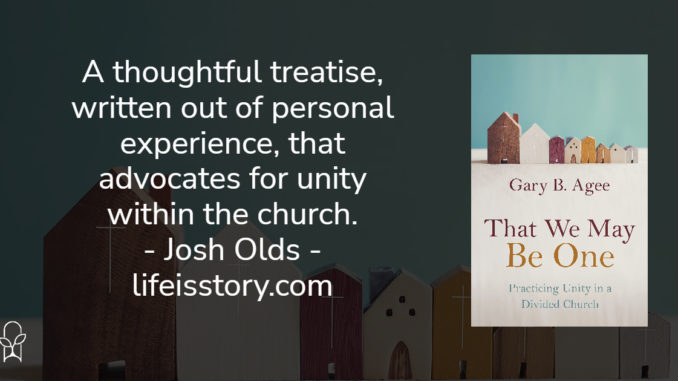
Published by Eerdmans on May 17, 2022
Genres: Academic, Non-Fiction, Christian Life
Buy on Amazon
Goodreads

Transcending divisions and healing the broken Body of Christ.
Disunity is a reality within churches today. Left unaddressed, political disagreements and racial inequities can fester into misunderstanding, resentment, and anger. But often the act of addressing this discord prompts further animosity, widening fissures into gaping fault lines between fellow members of the same community.
Gary Agee, a pastor well-versed in leading diverse congregations, reflects here on the roots of division within the church and the virtues and practices that can promote the restoration of unity. With disarming honesty and humility, Agee offers sage advice gleaned from Scripture and years of practical experience to show how we might fulfill Jesus’s prayer on behalf of the church: “That all of them may be one, Father, just as you are in me and I am in you. . . . That they may be one as we are one.” At the end of each chapter, Agee includes exercises, discussion questions, and suggested practices, providing a concrete path to unity through dialogue and action.
In his High Priestly Prayer in John 17, Jesus prays for something that remains unfulfilled—he prays for unity. Although we see glimmers of this unity within the early church, the saga of history is a church at war, socially, politically, and literally. That division has been especially highlighted over the past decade in the American church. Into this morass wades Gary B. Agee, with his calm and film guide for creating unity in the church. That We May Be One is a thoughtful treatise, written out of personal experience, that advocates for unity within the church.
The opening chapters develops the theological and practical need for unity, using Agee’s own personal experience and reflections as a guide. From there, That We May Be One discusses how unity might be achieved, focusing on the need for humility, empathetic listening, introspection, self-awareness, transparency, curiosity, and endurance. It is this middle chapter where Agee’s thoughtfulness really comes through and I would not have been upset at all had this chapter been expanded to be the primary content of the book.
The latter half of the book describes the struggles for unity in the New Testament and in church history. Agee spends a chapter refuting the false gospel of Christian nationalism and taking white evangelicalism to task for their political positions and rhetoric. And here is where the book falters. While Agee describes how these behaviors (and reactions to them) drive disunity, he offers very little thought in how (or if) we should be united. Are there areas in which Christians should not unite with others who claim the name? That We May Be One is an academic and sanitized take on developing unity that doesn’t do much in getting into the emotional nitty-gritty of it all. Agee’s message is somewhat lost amid the academic tone and dry writing.
While the message and intentions are good, there are more engaging alternatives—Chrestina Cleveland’s Disunity in Christ being the gold standard. Agee also fails to talk about when unity can be dangerous and disfellowship may be necessary. Calling for unity with one’s abuser is not healthy or biblical, so any discussion that fails to adequately talk about when to be disunited—particularly in light of the current divisions in the American church—isn’t offering a solution that’s practical, loving, and complete. I appreciate Agee’s book for its irenic and academic tone. However, I’m not convinced that’s what is needed to bring about a repentance that can then lead to unity in the American church.
